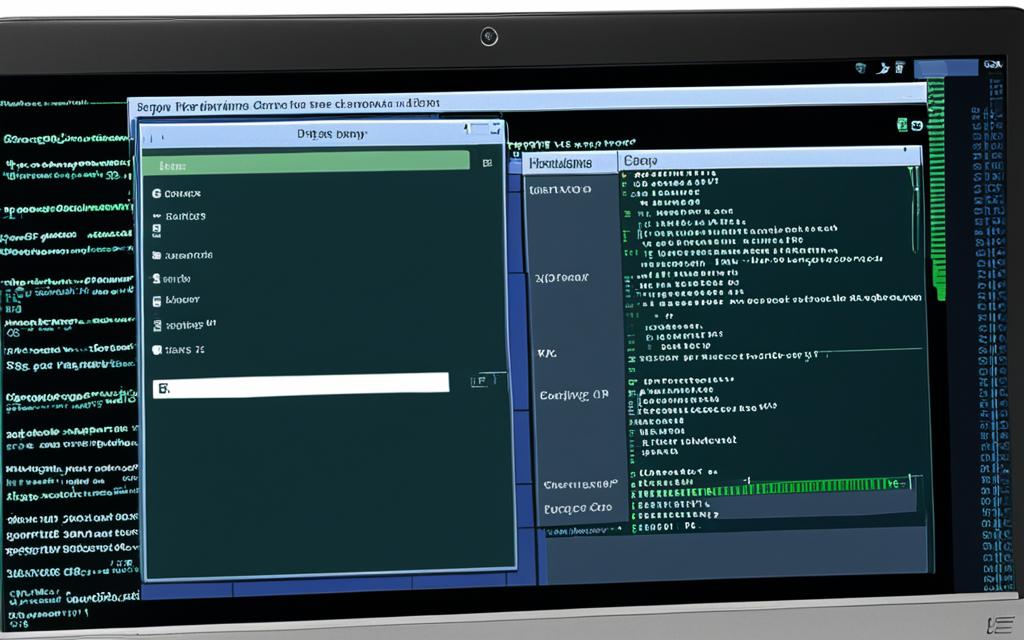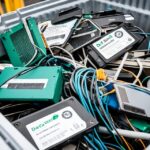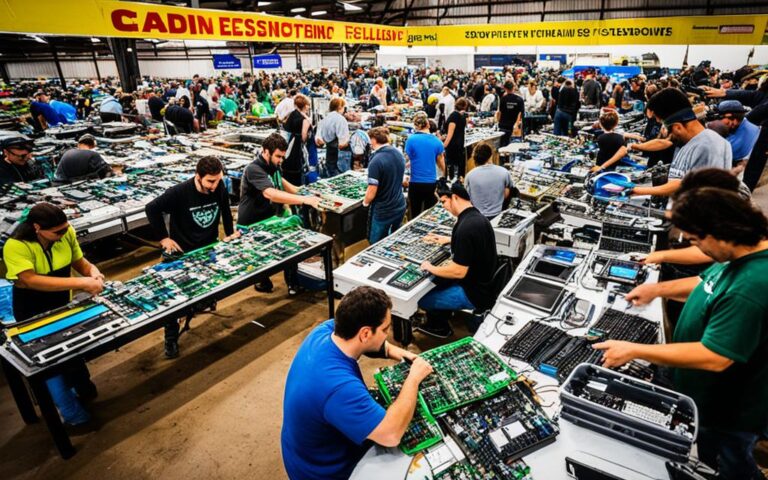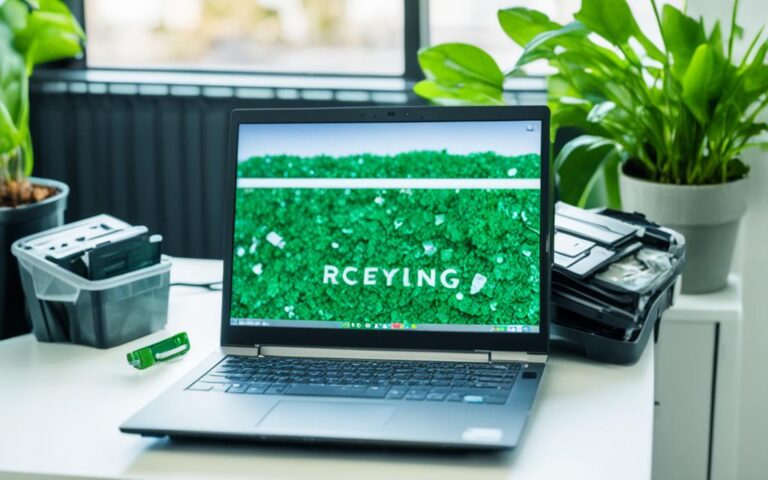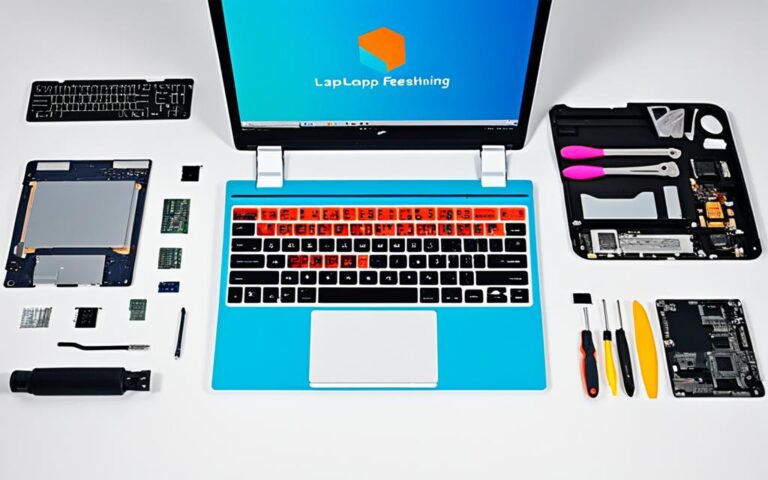Laptop Disposal: How to Do It the Right Way
When it comes to laptop disposal, it’s crucial to prioritize both environmental safety and data security. Properly disposing of your old laptop not only prevents harm to the environment but also ensures the protection of your personal information. In this article, we will guide you through the proper methods of laptop disposal, so you can responsibly recycle your device without compromising data security. Let’s start by understanding the importance of following the correct disposal process and abiding by local recycling laws.
The Importance of Backing Up Your Old Hard Drive
Backing up your old hard drive before disposal is essential for various reasons. It ensures that important information, such as family photos and financial records, is preserved and accessible in the future. It also simplifies the setup process of a new laptop by allowing for the transfer of necessary data. Moreover, if you are disposing of a business laptop, you must consider data retention and compliance laws. Backing up the hard drive in multiple locations, such as physical mediums and cloud storage, helps prevent data loss in case of emergencies or outages.
Preserving Valuable Data
By backing up your old hard drive, you safeguard valuable data, ensuring that it remains intact and accessible. Whether it’s cherished family photos, important documents, or confidential files, preserving this information is crucial. Losing such data can be devastating, and once it’s gone, it may be irretrievable.
Additionally, backing up your data allows for seamless transition when setting up a new laptop. Instead of starting from scratch, you can simply restore your backed-up files and have everything at your fingertips, saving time and effort.
Data Retention Compliance
For businesses, data retention compliance is a critical consideration when disposing of laptops. Many industries have specific regulations regarding the storage and retention of sensitive information. By backing up the hard drive, you can ensure compliance with these regulations, protecting your business from potential legal consequences and data breaches.
Preventing Data Loss
Backed-up data serves as a fail-safe in case of emergencies or unexpected data loss. Accidents, hardware failures, and power outages can result in the loss of data stored on a single device. By keeping backups in multiple locations, such as external hard drives or cloud storage, you can mitigate the risk of permanent data loss.
It’s always better to be safe than sorry when it comes to data. Taking the time to back up your old hard drive ensures that your valuable information is protected and accessible, providing peace of mind and minimizing the chances of permanent data loss.
Properly Deleting Your Data
When disposing of old conventional hard drives, simply deleting the data may not be sufficient to ensure its complete removal. This is because these hard drives possess a mechanical nature and employ a specific data storage process that can leave traces of information behind. Even after wiping or deleting data, skilled individuals can still retrieve the physical recordings, posing a risk to data security. Therefore, it is crucial to employ proper methods that guarantee irreversible data storage, minimizing the possibility of data breaches and ensuring the protection of sensitive information.
There are two primary approaches to properly deleting data from a hard drive: using data-shredding software or physically destroying the hard drive itself. Data-shredding software is specifically designed to overwrite existing data with random binary codes, making it virtually impossible to recover the original information. This software utilizes advanced algorithms that ensure every bit of data is overwritten, leaving no room for retrieval.
Alternatively, physically destroying the hard drive is another effective method. This irreversible data storage method involves physically damaging the hard drive to the point where recovery is impossible. It could include methods like shredding, drilling holes, or even incinerating the hard drive. By rendering the hard drive inoperable, you can guarantee that any data stored on it becomes permanently inaccessible and unreadable.
Benefits of Secure Data Deletion Methods
“Properly deleting data from hard drives is a critical step in protecting sensitive information and preventing potential data breaches. Employing secure data deletion methods ensures that data cannot be recovered, minimizing the risks associated with data security.”
Using secure data deletion methods provides several key benefits:
- Protecting Data Security: By permanently deleting data, you safeguard your sensitive information from unauthorized access, ensuring data privacy and security.
- Compliance with Regulations: Many industries have stringent data protection regulations that require the complete removal of sensitive information from storage devices before disposal. Employing secure data deletion methods helps you comply with these regulations.
- Peace of Mind: Knowing that your data is irretrievable provides peace of mind, alleviating concerns about potential data breaches or identity theft.
It is essential to choose a data deletion method that aligns with your specific needs and the level of security required for your data. For personal use, data-shredding software can be a convenient and effective solution. However, for high-security requirements or situations where you need absolute certainty about data destruction, physically destroying the hard drive is the recommended approach.
By following proper data deletion methods, you can confidently dispose of your old hard drive, ensuring that no trace of sensitive information remains accessible.
| Data Deletion Method | Advantages |
|---|---|
| Data-Shredding Software |
|
| Physical Destruction of Hard Drive |
|
Note: The chosen data deletion method should consider factors such as the level of data sensitivity, regulatory requirements, and personal preferences.
Destroying the Hard Drive
After backing up your data and securely deleting it, the next step is to destroy the hard drive to ensure data irretrievability. There are several physical destruction methods that can render the data on the hard drive completely inaccessible.
Safety Precautions
Before proceeding with the destruction process, it’s important to take safety precautions to prevent any accidents or injuries. Always wear safety goggles and gloves to protect yourself from flying shards and sharp edges. Additionally, ensure that you are in a well-ventilated area to avoid inhaling any dust or particles produced during the destruction process.
Physical Destruction Methods
Here are some commonly used physical destruction methods for hard drives:
- Hammer: Using a hammer to strike the hard drive can be an effective method of destruction. Position the hard drive securely on a sturdy surface, then strike it forcefully multiple times until it is completely damaged.
- Drilling: Another method is to drill holes directly into the hard drive. Use a power drill with a strong drill bit and carefully drill through the hard drive casing and platters, ensuring that you penetrate the storage media.
- Shredding: For a more thorough destruction, consider using a hard drive shredding machine. These machines are specifically designed to shred hard drives into tiny pieces, making data recovery virtually impossible.
Remember to follow the manufacturer’s guidelines for each destruction method and handle the hard drive with caution. Once the destruction process is complete, ensure that all pieces of the hard drive are properly disposed of according to local laws and regulations.
By properly and safely destroying the hard drive, you can have peace of mind knowing that your data is completely irretrievable, protecting your sensitive information from falling into the wrong hands.
| Physical Destruction Methods | Effectiveness | Difficulty |
|---|---|---|
| Hammer | High | Low |
| Drilling | Medium | Medium |
| Shredding | High | High |
Correct Disposal and Recycling of Hard Drives
Disposing of hard drives correctly and in compliance with local disposal and recycling laws is crucial for environmental safety. Many rubbish tips and recycling centers have designated sections for electronic waste recycling. It’s important to research and find the closest facility that accepts electronic waste in your local area. Additionally, there are businesses that specialize in responsible disposal and recycling of electronic waste. These companies work with IT companies or export hardware to less developed areas where they can be reused or repurposed. It’s also possible to utilize secure data shredding services provided by professional companies like RecycleIT.
Benefits of Responsible Recycling Companies
Here are some benefits of working with responsible recycling companies:
- Proper disposal and recycling of electronic waste
- Compliance with local disposal and recycling laws
- Eco-friendly practices that minimize environmental impact
- Secure data shredding services to protect sensitive information
- Reusing or repurposing hardware for a sustainable approach
By choosing a reputable recycling company like RecycleIT, you can ensure that your hard drive is disposed of responsibly and in a way that aligns with environmental safety principles. These companies are experts in electronic waste recycling and have the necessary processes in place to handle and process hard drives securely.
Quote: “Responsible recycling companies play a vital role in preserving natural resources and minimizing the environmental impact of electronic waste disposal.” – Jane Smith, Environmental Specialist
| Benefits of Responsible Recycling Companies | Examples |
|---|---|
| Proper disposal and recycling of electronic waste | RecycleIT works closely with local recycling centers to ensure electronic waste is handled correctly. |
| Compliance with local disposal and recycling laws | RecycleIT ensures that all disposal and recycling processes follow the necessary legal requirements. |
| Eco-friendly practices that minimize environmental impact | RecycleIT employs sustainable recycling methods to reduce the carbon footprint associated with electronic waste. |
| Secure data shredding services to protect sensitive information | RecycleIT offers secure data shredding services to ensure the complete destruction of data on hard drives. |
| Reusing or repurposing hardware for a sustainable approach | RecycleIT refurbishes and reuses viable components from old hard drives, reducing waste and promoting sustainability. |
By partnering with responsible recycling companies, you not only contribute to a cleaner environment but also support the circular economy by giving old hardware a new lease of life. It’s crucial to choose a company that prioritizes environmental safety and data security, ensuring that your hard drive disposal is handled responsibly.
Conclusion
Proper disposal of old laptops is crucial to safeguard the environment and personal data. By following recommended steps, including backing up and securely deleting data, destroying the hard drive, and adhering to local disposal laws, individuals can ensure the responsible and safe disposal of their laptops.
Recycling electronic waste also plays a significant role in conserving energy, reducing carbon emissions, and preserving natural resources. To prioritize environmental safety and data security, it is important to select trusted recycling facilities or reputable companies like RecycleIT.
By responsibly disposing of old laptops and participating in responsible recycling practices, individuals can contribute to a sustainable future while protecting their personal information.
FAQ
Why is it important to back up my old hard drive before disposal?
Backing up your old hard drive before disposal ensures the preservation and accessibility of important information, simplifies the setup process of a new laptop, and helps comply with data retention and compliance laws.
How can I securely delete data from my old hard drive?
To securely delete data from your old hard drive, you can use data-shredding software or physically destroy the hard drive to ensure complete removal of data.
What are the methods for destroying a hard drive?
There are several methods to physically destroy a hard drive, including using a hammer or drills. It is important to take safety precautions, such as wearing safety goggles and gloves, when destroying a hard drive.
How should I dispose of my hard drive in compliance with local laws?
To dispose of your hard drive correctly and in compliance with local laws, you can research and find the closest facility that accepts electronic waste in your local area or work with professional companies that specialize in responsible disposal and recycling of electronic waste.

